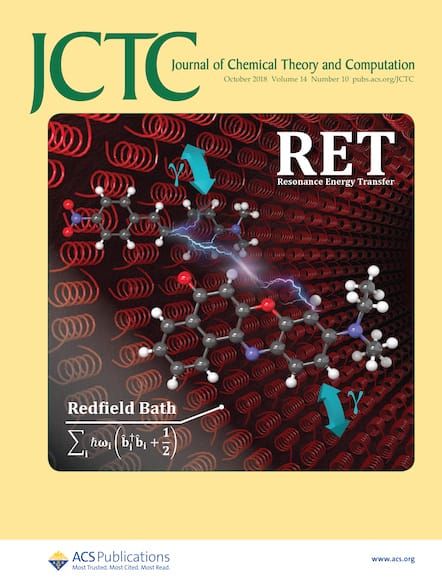ANI-1xBB: An ANI-Based Reactive Potential for Small Organic Molecules.
IF 5.7
1区 化学
Q2 CHEMISTRY, PHYSICAL
引用次数: 0
Abstract
Reactive potentials serve as essential tools for investigating chemical reactions with moderate computational costs. However, traditional reactive potentials often depend on fixed, semiempirical parameters, which limits their accuracy and transferability. Overcoming these limitations can significantly expand the applicability of reactive potentials, enabling the simulation of a broader range of reactions under diverse conditions and the prediction of reaction properties, such as barrier heights. This work introduces ANI-1xBB, a novel ANI-based reactive ML potential trained on off-equilibrium molecular conformers generated through an automated bond-breaking workflow. ANI-1xBB significantly enhances the prediction of reaction energetics, barrier heights, and bond dissociation energies, surpassing those of conventional ANI models. Our results show that ANI-1xBB improves transition state modeling and reaction pathway prediction while generalizing effectively to pericyclic reactions and radical-driven processes. Furthermore, the automated data generation strategy supports the efficient construction of large-scale, high-quality reactive data sets, reducing reliance on expensive QM calculations. This work highlights ANI-1xBB as a practical model for accelerating the development of reactive machine learning potentials, offering new opportunities for modeling reaction phenomena.ANI-1xBB:一种基于ani的有机小分子反应电位。
反应电位是研究化学反应的基本工具,计算成本适中。然而,传统的反应电位往往依赖于固定的半经验参数,这限制了它们的准确性和可转移性。克服这些限制可以显著扩大反应电位的适用性,从而能够在不同条件下模拟更广泛的反应,并预测反应性质,如势垒高度。这项工作介绍了ANI-1xBB,这是一种新型的基于ani的反应性ML电位,通过自动断键工作流生成的非平衡分子构象进行训练。ANI- 1xbb显著提高了反应能、势垒高度和键离解能的预测能力,优于传统的ANI模型。我们的研究结果表明,ANI-1xBB改进了过渡态建模和反应途径预测,同时有效地推广到周环反应和自由基驱动过程。此外,自动化数据生成策略支持大规模、高质量反应性数据集的有效构建,减少了对昂贵的QM计算的依赖。这项工作强调了ANI-1xBB作为加速反应性机器学习潜力发展的实用模型,为模拟反应现象提供了新的机会。
本文章由计算机程序翻译,如有差异,请以英文原文为准。
求助全文
约1分钟内获得全文
求助全文
来源期刊

Journal of Chemical Theory and Computation
化学-物理:原子、分子和化学物理
CiteScore
9.90
自引率
16.40%
发文量
568
审稿时长
1 months
期刊介绍:
The Journal of Chemical Theory and Computation invites new and original contributions with the understanding that, if accepted, they will not be published elsewhere. Papers reporting new theories, methodology, and/or important applications in quantum electronic structure, molecular dynamics, and statistical mechanics are appropriate for submission to this Journal. Specific topics include advances in or applications of ab initio quantum mechanics, density functional theory, design and properties of new materials, surface science, Monte Carlo simulations, solvation models, QM/MM calculations, biomolecular structure prediction, and molecular dynamics in the broadest sense including gas-phase dynamics, ab initio dynamics, biomolecular dynamics, and protein folding. The Journal does not consider papers that are straightforward applications of known methods including DFT and molecular dynamics. The Journal favors submissions that include advances in theory or methodology with applications to compelling problems.
 求助内容:
求助内容: 应助结果提醒方式:
应助结果提醒方式:


